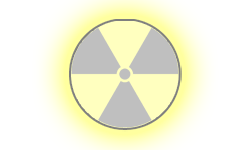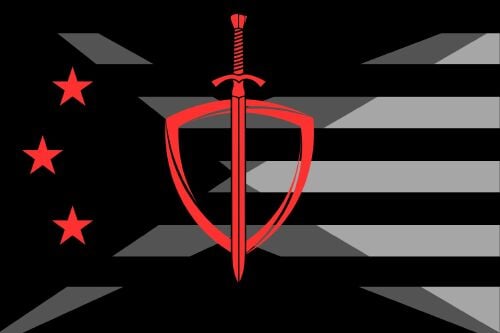| National Factbook |
| Flag: |

|
| Nation Name: |
The Kingdom of Spain |
| Leader Name: |
Felipe the VI |
| Currency: |

Euro |
| National Animal: |

Lion |
| History: |
The history of Spain is an epic tale that unfolds across centuries, reflecting a rich amalgamation of diverse cultures, conquests, and revolutions that have shaped its identity.
Spain's story begins in prehistoric times when ancient tribes like the Iberians, Celts, and Tartessians inhabited the Iberian Peninsula. These early civilizations laid the groundwork for the complex tapestry of cultures that would later thrive in the region.
The Roman era marked a significant chapter as Spain, then known as Hispania, became an integral part of the vast Roman Empire. The Romans brought advancements in governance, infrastructure, and culture, leaving an enduring legacy that influenced the peninsula for centuries.
Following the fall of the Roman Empire, the Visigoths established their kingdom in Spain. However, in 711 AD, the Moors, a Muslim Berber-Arab force from North Africa, initiated an era of Islamic rule known as Al-Andalus. This period of nearly eight centuries saw remarkable achievements in art, science, and architecture, shaping the character of Spain profoundly.
The Reconquista, a prolonged Christian reconquest, began in the 8th century and lasted until 1492 when the Catholic Monarchs, Ferdinand of Aragon and Isabella of Castile, completed the Reconquista by conquering Granada, the last Moorish stronghold. This pivotal moment unified Spain under a single Catholic monarchy.
Spain's golden age arrived with the Age of Exploration in the 15th and 16th centuries. Sponsored by Spain's monarchs, voyagers like Christopher Columbus discovered the Americas, opening a new chapter of conquest, trade, and colonization. The influx of wealth from the New World made Spain a dominant European power, but it also sparked conflicts and exploitation of indigenous peoples.
In subsequent centuries, Spain grappled with political upheavals, wars, and social transformations. The country experienced periods of prosperity and decline, monarchies and republics, revolutions and restorations, each leaving an indelible mark on its history and culture.
Today, Spain stands as a vibrant tapestry woven from its diverse heritage, embracing its historical legacy while looking toward the future. Its rich history continues to shape its art, architecture, cuisine, and traditions, offering a captivating glimpse into a past that continues to influence its present. |
| Geography |
| Continent: |
Europe |
| Land Area: |
191,511.46 sq. km |
| Terrain: |
Spain occupies most of the Iberian Peninsula, stretching south from the Pyrenees Mountains to the Strait of Gibraltar, which separates Spain from Africa. To the east lies the Mediterranean Sea, including Spain's Balearic Islands. Spain also rules two cities in North Africa and the Canary Islands in the Atlantic.
The interior of Spain is a high, dry plateau surrounded and crisscrossed by mountain ranges. Rivers run to the coasts, creating good farmland. Still, the interior of the country gets very hot in summer and very cold and dry in the winter. Droughts are common.
Plants and trees grow so well on the northwestern coast, in Galicia and along the Bay of Biscay, that the area is called Green Spain. Rain, trapped by the mountains farther inland, is frequent. Beech and oak trees flourish here. Numerous coves and inlets break up the coastline.
The southern and eastern coasts of Spain, from the fertile Andalusian plain up to the Pyrenees, are often swept by warm winds called sirocco winds. These winds originate in northern Africa and keep temperatures along the Mediterranean coast milder than the interior. |
| Highest Peak: |
Pico del Teide,
3,718 meters
|
| Lowest Valley: |
Masca Valley,
274 meters
|
| Climate: |
There are three different climate zones in Spain, due to its large size. Visitors can generally expect a Mediterranean climate, characterized by hot, dry summers and mild, rainy winters. The vast central plateau, or Meseta, has a more continental influenced climate with hot, dry summers and cold winters. Rain generally falls mostly in spring and autumn. The mountains surrounding the plateau have a higher rainfall and often experience heavy snowfalls in winter. |
| People & Society |
| Population: |
11,180,061 people |
| Demonym: |
Spaniard |
| Demonym Plural: |
Spaniards |
| Ethnic Groups: |
Spaniards - 84.8%
Moroccan - 1.7%
Romanian - 1.2% |
| Languages: |
Spanish - 98.9%
Catalan - 17.5%
Galician - 6.2% |
| Religions: |
Catholic - 52.0%
Atheism - 16.8%
Agnosticism - 14.4% |
| Health |
| Life Expectancy: |
82 years |
| Obesity: |
18.7% |
| Alcohol Users: |
77.2% |
| Tobacco Users: |
2.1% |
| Cannabis Users: |
0.5% |
| Hard Drug Users: |
0.2% |
| Economy |
| Description: |
The economy of Spain is a highly developed social market economy. It’s the world's 15th largest by nominal GDP and the sixth-largest in Europe. Spain is a member of the European Union and the eurozone, as well as the Organization for Economic Co-operation and Development and the World Trade Organization. In 2021, Spain was the twentieth-largest exporter in the world and the sixteenth-largest importer. Spain is listed 27th in the United Nations Human Development Index and 37th in GDP per capita by the World Bank. |
| Average Yearly Income: |
$52.65 |
| Gross Domestic Product (GDP): |
$20,169,645,817.00 |
| GDP per Capita: |
$1,804.07 |
| Gross National Income (GNI): |
$8,446,598,225.00 |
| Industries: |
Some of the main areas of economic activity are the automotive industry, medical technology, chemicals, shipbuilding, tourism and the textile industry. |
| Military |
| History: |
The Spanish Armed Forces are in charge of guaranteeing the sovereignty and independence of the Kingdom of Spain, defending its territorial integrity and the constitutional order, according to the functions entrusted to them by the Constitution of 1978. |
| Soldiers: |
510,000 |
| Tanks: |
42,000 |
| Aircraft: |
2,475 |
| Ships: |
224 |
| Missiles: |
10 |
| Nuclear Weapons: |
0 |
| Last Updated: 01/07/2024 11:53 pm |




















